Best Land for Subdivision in New Zealand: Identifying Prime Opportunities
 By
Trent Bradley
·
11 minute read
By
Trent Bradley
·
11 minute read

Finding the best land for subdivision in New Zealand requires understanding the unique characteristics that make sites ideal for division into multiple lots. While location remains crucial, successful subdivision depends on specific technical, regulatory, and market factors that distinguish great subdivision opportunities from marginal ones. This comprehensive guide explores the characteristics of ideal subdivision land and provides practical strategies for identifying and evaluating premium subdivision opportunities across New Zealand.
Table of Contents
- Characteristics of Ideal Subdivision Land
- Location Criteria for Premium Subdivision Sites
- Physical Site Characteristics
- Regulatory and Zoning Considerations
- Market Demand and Target Buyer Considerations
- Infrastructure and Servicing Factors
- Regional Opportunities and Hotspots
- Due Diligence Specific to Subdivision Land
- Financial Analysis and Investment Metrics
- Common Land Selection Mistakes
- Working with Subdivision Finance Specialists
- Frequently Asked Questions
Key Takeaways
- Ideal subdivision sites range from 2,000 square metres for simple subdivisions to 50+ hectares for master-planned communities, with regular shapes and gentle slopes (1-15%) that minimize earthworks costs while enabling efficient lot layouts and good drainage
- Premium subdivision sites combine multiple street frontage opportunities, confirmed infrastructure capacity (water, wastewater, electricity), and growth corridor positioning within 30-45 minutes of major employment centres
- Sites with subdivision-friendly zoning, clear minimum lot size compliance, and councils with efficient consent processing provide more predictable development outcomes than sites requiring zoning changes or non-complying activity consents
- Comprehensive due diligence must include geotechnical assessment, infrastructure capacity confirmation through written council and utility provider responses, specialist planning advice, and conservative market absorption analysis before acquisition commitment
- Common mistakes include overestimating lot yield potential, underestimating infrastructure costs by 20-40%, ignoring realistic market absorption rates, and selecting sites based on perceived value without validating target market alignment
- Regional opportunities vary significantly—Auckland growth corridors (Westgate, Millwater, Pokeno) require confirmed infrastructure and transport connections, while Canterbury plains offer favorable flat topography and good soil conditions for efficient development
Characteristics of Ideal Subdivision Land
The best subdivision land combines optimal physical characteristics with favorable regulatory frameworks and strong market fundamentals that support successful lot creation and sales.
Appropriate Scale and Configuration: Ideal subdivision sites typically range from 2,000 square metres for simple subdivisions to 50+ hectares for master-planned communities. Sites should have regular shapes that enable efficient lot layouts without excessive waste or awkward remainder areas.
Gentle to Moderate Topography: Sites with gentle slopes (typically 1-15%) provide optimal subdivision potential by minimizing earthworks costs while enabling good drainage and attractive lot layouts. Steeper slopes increase development costs but may provide premium positioning opportunities with views or unique character.
Multiple Street Frontage Opportunities: Sites with existing street frontage or potential for multiple access points provide greater design flexibility and often enable higher lot yields. Multiple access options also reduce infrastructure costs per lot and improve emergency access provisions.
Adequate Size for Efficient Development: The best subdivision sites provide sufficient area to justify infrastructure investment while achieving lot numbers that support viable development economics. Very small sites may not justify infrastructure costs, while excessively large sites may create market absorption challenges.
Clear Development Potential: Premium subdivision sites have obvious development potential under current zoning without requiring complex consent processes or significant regulatory uncertainty. Sites requiring zoning changes or non-complying activity consents carry additional risk and cost.
Proximity to Growth Areas: The best subdivision opportunities are typically located in or adjacent to established growth areas where infrastructure capacity exists and market demand is proven. Pioneer developments in isolated areas face greater market and infrastructure risks.
Location Criteria for Premium Subdivision Sites
Location characteristics significantly influence subdivision success through their impact on market appeal, regulatory support, and development costs.
Growth Corridor Positioning: Sites located within established or planned growth corridors benefit from infrastructure investment, regulatory support, and sustained market demand. Growth corridors typically offer the most predictable development outcomes and strongest value appreciation.
Transport Accessibility: Premium subdivision sites provide good transport accessibility including reasonable commuting distances to employment centres, public transport access, and quality road connections. Transport accessibility directly influences market appeal and pricing potential.
Infrastructure Availability: The best subdivision sites have existing infrastructure capacity or are included in planned infrastructure upgrades. Sites requiring significant infrastructure extensions or capacity upgrades face higher costs and longer development timelines.
Amenity Proximity: Quality subdivision sites provide reasonable access to essential amenities including schools, shopping, healthcare, and recreational facilities. Amenity proximity influences buyer appeal and supports premium pricing strategies.
Environmental Attributes: Sites with positive environmental attributes including views, native vegetation, water features, or recreational access often command premium pricing while providing unique selling propositions that differentiate developments in competitive markets.
Community Acceptance: Premium subdivision sites are located where development is generally accepted by existing communities and supported by local council policy. Sites facing likely community opposition require more complex development processes and may face ongoing relationship challenges.
Physical Site Characteristics
Understanding optimal physical characteristics helps identify sites with superior subdivision potential while avoiding costly development constraints.
Soil Conditions and Geotechnical Factors: Sites with stable soils and good drainage characteristics minimize infrastructure costs while supporting efficient lot layouts. Clay soils may require specialized stormwater management, while rock may increase excavation costs but provide excellent foundation conditions.
Drainage and Stormwater Management: Premium subdivision sites have natural drainage characteristics that support efficient stormwater management without requiring extensive detention systems or costly treatment facilities. Sites with natural drainage paths often enable more cost-effective infrastructure solutions.
Existing Vegetation and Landscaping: Sites with quality existing vegetation provide landscape value and potential cost savings through retention strategies. However, significant native vegetation may create consent constraints requiring specialist ecological assessment and mitigation measures.
Access and Road Frontage: Multiple road frontage options or potential for efficient internal roading layouts reduce infrastructure costs per lot while improving development flexibility. Sites requiring extensive road construction or complex access arrangements face higher development costs.
Utility Service Proximity: Sites located close to existing utility infrastructure including electricity, telecommunications, water, and wastewater systems benefit from lower connection costs and faster service provision. Remote sites may face substantial utility extension costs.
Natural Hazard Considerations: Premium subdivision sites avoid or minimize exposure to natural hazards including flooding, coastal erosion, earthquake risks, or geotechnical instability. Sites with significant hazard exposure face higher development costs and ongoing liability concerns.
Regulatory and Zoning Considerations
Understanding regulatory frameworks helps identify sites with favorable subdivision potential while avoiding complex consent processes and regulatory obstacles.
Subdivision-Friendly Zoning: The best subdivision sites are zoned for residential, rural-residential, or mixed-use development with clear subdivision provisions and reasonable minimum lot sizes. Avoid sites requiring zoning changes or non-complying activity consents where possible.
Minimum Lot Size Requirements: Sites that can accommodate multiple lots while comfortably exceeding minimum size requirements provide greater design flexibility and reduced consent risk. Sites that barely meet minimum requirements may face consent challenges if design modifications are required.
Setback and Coverage Requirements: Understanding building setbacks, site coverage limits, and height restrictions helps assess actual development potential and market appeal of resulting lots. Overly restrictive building controls may limit market appeal despite favorable subdivision provisions.
Infrastructure Development Standards: Council infrastructure standards significantly impact subdivision costs and design requirements. Areas with standard infrastructure requirements typically provide more predictable development costs compared to locations with special or enhanced standards.
Consent Processing Efficiency: Councils with efficient consent processing, supportive attitudes toward appropriate development, and reasonable fees provide superior development environments. Research council performance and attitudes before site selection.
Heritage and Environmental Overlays: Sites with heritage, ecological, or landscape protection overlays may face additional consent requirements and development constraints. While not necessarily prohibitive, these overlays require specialist input and may limit development options.
Market Demand and Target Buyer Considerations
Understanding target market characteristics helps identify sites that will appeal to intended buyers while supporting optimal pricing and sales outcomes.
Demographics and Household Formation: Sites in areas experiencing population growth, household formation, and demographic change typically provide sustained demand throughout development timelines. Analyze census data and population projections to validate demand assumptions.
Price Point Alignment: Premium subdivision sites enable lot pricing that aligns with target market affordability while providing adequate development returns. Sites that can only support lot prices above or below market demand face sales challenges and reduced profitability.
Lifestyle Preferences: Modern buyers increasingly value lifestyle amenities including recreational access, environmental quality, and community facilities. Sites that can provide or access these amenities command premium pricing and experience stronger demand.
First Home Buyer Appeal: Sites suitable for affordable lot creation often provide strong market demand through first home buyer activity, particularly in areas with good transport links to employment centres and reasonable commuting distances.
Investor Interest: Some subdivision markets attract investor purchasers seeking development sites or rental property opportunities. Understanding investor preferences helps optimize lot sizes and development approaches for these market segments.
Build Timeframe Expectations: Different buyer segments have varying expectations about building timeframes and processes. Sites that support efficient building processes through good access, services, and reasonable building covenants appeal to buyers seeking faster construction outcomes.
Infrastructure and Servicing Factors
Comprehensive infrastructure analysis identifies sites with optimal servicing potential while avoiding costly upgrade requirements and capacity constraints.
Water Supply Adequacy: Premium subdivision sites have confirmed water supply capacity with adequate pressure and flow for intended development density. Sites requiring water supply upgrades or private systems face additional costs and complexity.
Wastewater Treatment Options: Sites with access to council wastewater systems typically provide more straightforward development outcomes compared to sites requiring private treatment systems. Private systems require ongoing maintenance and may limit development density.
Electricity Supply Capacity: Confirm electrical supply capacity including transformer adequacy and connection costs for intended development. Sites requiring electrical network upgrades may face substantial costs and extended connection timeframes.
Telecommunications Infrastructure: Modern subdivisions require quality telecommunications infrastructure including fibre access and mobile coverage. Sites with existing infrastructure or planned upgrades provide competitive advantages in marketing and buyer appeal.
Stormwater Management Requirements: Understand stormwater management requirements including detention, treatment, and discharge provisions. Sites with favorable natural drainage often enable more cost-effective stormwater solutions.
Road Network Capacity: Assess road network capacity and potential upgrade requirements to support additional traffic from subdivision development. Sites requiring road upgrades may face substantial infrastructure contributions or direct upgrade costs.
Regional Opportunities and Hotspots
Different regions across New Zealand offer varying subdivision opportunities based on growth patterns, regulatory environments, and market conditions.
Auckland Subdivision Opportunities: New Zealand's largest city continues providing subdivision opportunities particularly in growth areas including Westgate, Millwater, Pokeno, and southern growth corridors. Focus on sites with confirmed infrastructure and transport connections.
Hamilton and Waikato Growth: Hamilton's growth continues creating subdivision opportunities in surrounding areas including Rototuna, Peacocke, and satellite towns like Cambridge and Te Awamutu. Agricultural land conversion provides ongoing opportunities.
Bay of Plenty Development: Tauranga's sustained growth creates subdivision demand particularly in Papamoa, Bethlehem, and surrounding areas. Lifestyle subdivision opportunities also exist in rural areas accessible to urban centres.
Wellington Region Prospects: Wellington's geographic constraints limit subdivision opportunities but create premium positioning for suitable sites in areas like Porirua, Upper Hutt, and Kapiti Coast where infrastructure capacity exists.
Canterbury Plains Opportunities: Christchurch's ongoing growth and rebuild continues creating subdivision opportunities in areas like Rolleston, Lincoln, and northern growth corridors. Flat topography and good soils provide favorable development conditions.
Provincial Growth Centres: Cities like Queenstown, Nelson, and New Plymouth provide subdivision opportunities driven by tourism, lifestyle migration, and economic development initiatives.
Due Diligence Specific to Subdivision Land
Comprehensive due diligence for subdivision sites requires specific investigations beyond standard property acquisition processes.
Detailed Subdivision Feasibility: Commission specialist subdivision feasibility analysis including lot yield studies, infrastructure requirements, and consent pathway assessment. Feasibility analysis should consider multiple development scenarios and regulatory options.
Geotechnical Assessment: Comprehensive geotechnical investigation identifies soil conditions, drainage characteristics, and earthworks requirements that significantly impact subdivision costs and lot appeal.
Infrastructure Capacity Confirmation: Confirm infrastructure capacity through formal enquiries with council and utility providers. Obtain written confirmation of connection capacity and costs rather than relying on informal advice.
Market Analysis and Absorption: Detailed market analysis should assess comparable subdivisions, current supply, and realistic absorption rates for target market segments. Conservative absorption assumptions provide more reliable financial projections.
Title and Legal Investigation: Review title structure, easements, covenants, and legal restrictions that may influence subdivision potential. Complex title structures may require legal restructuring before subdivision can proceed.
Planning and Consent Assessment: Engage specialist planning advice to assess subdivision potential, consent requirements, and processing risks. Planning assessment should consider design options and regulatory alternatives.
Financial Analysis and Investment Metrics
Sophisticated financial analysis helps identify subdivision sites with optimal return potential while managing development risks effectively.
Comprehensive Development Modeling: Develop detailed financial models including all acquisition, development, and holding costs with realistic revenue projections based on conservative market assumptions.
Sensitivity and Scenario Analysis: Test financial viability under various scenarios including cost increases, market softening, and extended development timelines. Robust subdivisions remain viable under reasonable adverse conditions.
Risk-Adjusted Return Assessment: Calculate risk-adjusted returns considering development risks, market volatility, and alternative investment opportunities. Higher-risk sites require higher return potential to justify investment.
Cash Flow Optimization: Structure development and sales programs to optimize cash flow including staging options, pre-sales strategies, and working capital requirements.
Exit Strategy Flexibility: Consider exit strategy options including partial sales, joint ventures, or complete project disposal if circumstances change during development.
Common Land Selection Mistakes
Understanding typical mistakes in subdivision land selection helps avoid costly errors and improve acquisition success rates.
Overestimating Lot Yield: Optimistic lot yield assumptions often lead to acquisition overpayment and reduced profitability. Base yield calculations on conservative design assumptions with adequate provision for infrastructure, landscaping, and regulatory requirements.
Underestimating Infrastructure Costs: Infrastructure costs often exceed initial estimates, particularly for sites requiring significant earthworks or utility extensions. Include substantial contingencies for infrastructure cost variations.
Ignoring Market Absorption Reality: Overestimating market absorption rates can create cash flow problems and extended holding costs. Research comparable developments and apply conservative absorption assumptions to financial projections.
Inadequate Regulatory Due Diligence: Assuming subdivision consent without proper planning assessment often leads to disappointment and delays. Validate subdivision feasibility through comprehensive planning advice before acquisition commitment.
Location Misjudgment: Selecting sites based on perceived value without adequate market analysis often results in poor sales outcomes. Ensure site characteristics align with target market preferences and accessibility requirements.
Working with Subdivision Finance Specialists
Successful subdivision development requires specialist financing that understands the unique characteristics and requirements of subdivision projects.
At Luminate Finance, we specialize in subdivision finance and work closely with developers to identify and evaluate subdivision opportunities across New Zealand. Our extensive experience helps developers assess subdivision potential while structuring appropriate financing for successful project delivery.
We understand the specific characteristics that make subdivision sites successful and provide valuable guidance on site selection, feasibility analysis, and development optimization. Our involvement often begins during site evaluation, helping developers assess acquisition opportunities and development strategies.
Our comprehensive approach includes review of subdivision feasibility, infrastructure requirements, market positioning, and financial structuring that supports successful subdivision outcomes. We work with developers to optimize lot yields, minimize development costs, and structure sales programs that maximize returns.
Through our involvement in numerous subdivision projects across diverse markets and site conditions, we've developed deep understanding of site characteristics that contribute to successful subdivisions and strong investment returns.
Our network of professional relationships including surveyors, engineers, planners, and market experts provides additional resources and expertise to support subdivision site evaluation and development success.
Frequently Asked Questions
What's the minimum land size needed for subdivision in New Zealand?
Minimum subdivision size depends entirely on local council zoning and minimum lot size requirements, which vary dramatically across regions and zones. Standard residential zones typically require 300-450 square metre minimum lots, meaning a 2,000 square metre site might yield 3-4 lots after accounting for access and infrastructure. Rural-residential zones often require 2,000-4,000 square metre minimum lots, while lifestyle zones may mandate 1-2 hectare minimums. However, practical subdivision viability requires sites large enough to justify infrastructure investment—generally 2,000+ square metres for simple 2-3 lot subdivisions, or 5,000+ square metres for 5+ lot developments where shared infrastructure costs become economically viable across multiple lots.
How do I confirm if a site has adequate infrastructure capacity for subdivision?
Never rely on assumptions about infrastructure capacity—formal written confirmation is essential. Contact your target council's infrastructure/development engineering team requesting written confirmation of water supply capacity (pressure and flow rates), wastewater system capacity, stormwater discharge options, and any required infrastructure contributions or upgrades. Separately contact electricity providers (typically Vector, Orion, or local networks) confirming transformer capacity and connection costs. Request these confirmations in writing before making acquisition commitments, as verbal advice isn't binding and infrastructure constraints discovered after purchase can render subdivisions unviable or require $10,000-30,000+ per lot in unexpected upgrade costs.
What slope or topography is best for subdivision development?
Gentle slopes of 1-10% provide optimal subdivision conditions—sufficient fall for natural drainage without excessive earthworks costs or difficult building platforms. Slopes of 10-15% remain very workable but increase earthworks costs by 20-40% and may require retaining walls or specialized engineering. Slopes exceeding 15-20% dramatically increase development costs (often 50-100%+ more) and create challenging building platforms, though they may provide premium positioning through views or unique character that justifies higher costs. Flat sites (under 1% slope) create stormwater management challenges requiring detention systems or specialized drainage solutions. Ideal sites have gentle cross-fall enabling efficient road layouts with natural drainage to road channels.
Should I buy subdivision land that requires rezoning or plan changes?
Sites requiring rezoning or plan changes carry substantially higher risk and longer timelines (typically 2-5 years for plan change processes) compared to sites with existing subdivision-friendly zoning. Only pursue rezoning opportunities if you have extensive development experience, substantial capital to hold land through uncertain processes, strong planning expertise, and can purchase at prices reflecting significant uncertainty discount (typically 30-50% below zoned equivalent value). First-time developers should focus exclusively on sites with existing appropriate zoning and clear subdivision pathways. Rezoning risks include council refusal, community opposition, extended timelines, and substantial professional costs ($50,000-200,000+) with no guaranteed outcome.
How many lots can I realistically get from my subdivision site?
Theoretical lot yield based purely on minimum lot sizes typically overstates actual achievable yield by 20-40%. Calculate realistic yield by: (1) identifying total site area, (2) deducting 15-25% for internal roads and access, (3) deducting 10-15% for stormwater infrastructure and reserves, (4) deducting areas unsuitable for building (steep slopes, waterways, significant vegetation), and (5) dividing remaining area by minimum lot size plus average building setbacks. For example, a 10,000 square metre site with 350 square metre minimum lots theoretically yields 28 lots, but realistic yield after deductions is typically 16-20 lots. Always base financial feasibility on conservative yield assumptions validated by preliminary design layouts.
What infrastructure costs should I budget per lot for subdivision?
Infrastructure costs vary dramatically based on site conditions, council requirements, and development scale, but typical ranges are $40,000-$80,000 per lot for standard subdivisions including roading, water supply, wastewater, stormwater, and electricity connections. Simple 2-3 lot subdivisions may achieve $30,000-50,000 per lot through shared infrastructure. Complex sites requiring significant earthworks, pump stations, or extensive utility extensions may exceed $100,000+ per lot. Always commission detailed engineering estimates before purchase commitments, include 15-20% contingencies for cost variations, and validate assumptions against comparable recent subdivisions in your target area. Infrastructure costs as percentage of lot value typically range from 15-30% depending on final lot pricing.
Ready to identify and develop the best subdivision land with specialist finance support? Contact Luminate Finance today to discuss how our subdivision expertise and comprehensive site evaluation capabilities can support your success from site acquisition through completed subdivision.

Trent Bradley
Trent Bradley is a New Zealand financial advisor specializing in property-backed finance and investment consulting. With over 26 years of experience running his mortgage broking business, he has helped wholesale investors access high-yield property-backed loan opportunities. For the past 12 years, Trent has led Luminate Finance, a New Zealand finance company dedicated to connecting investors with secure property investment solutions.


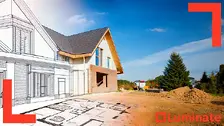



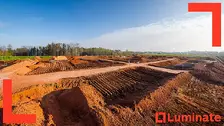



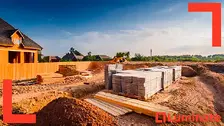








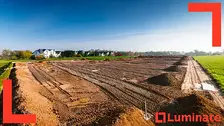
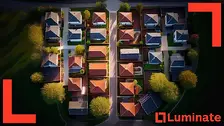







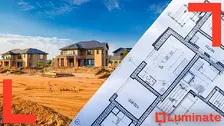
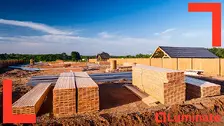



.png?//48413319.fs1.hubspotusercontent-ap1.net/hubfs/48413319/Featured%20images%20(14).png&width=247&height=126&name=Featured%20images%20(14).png)




